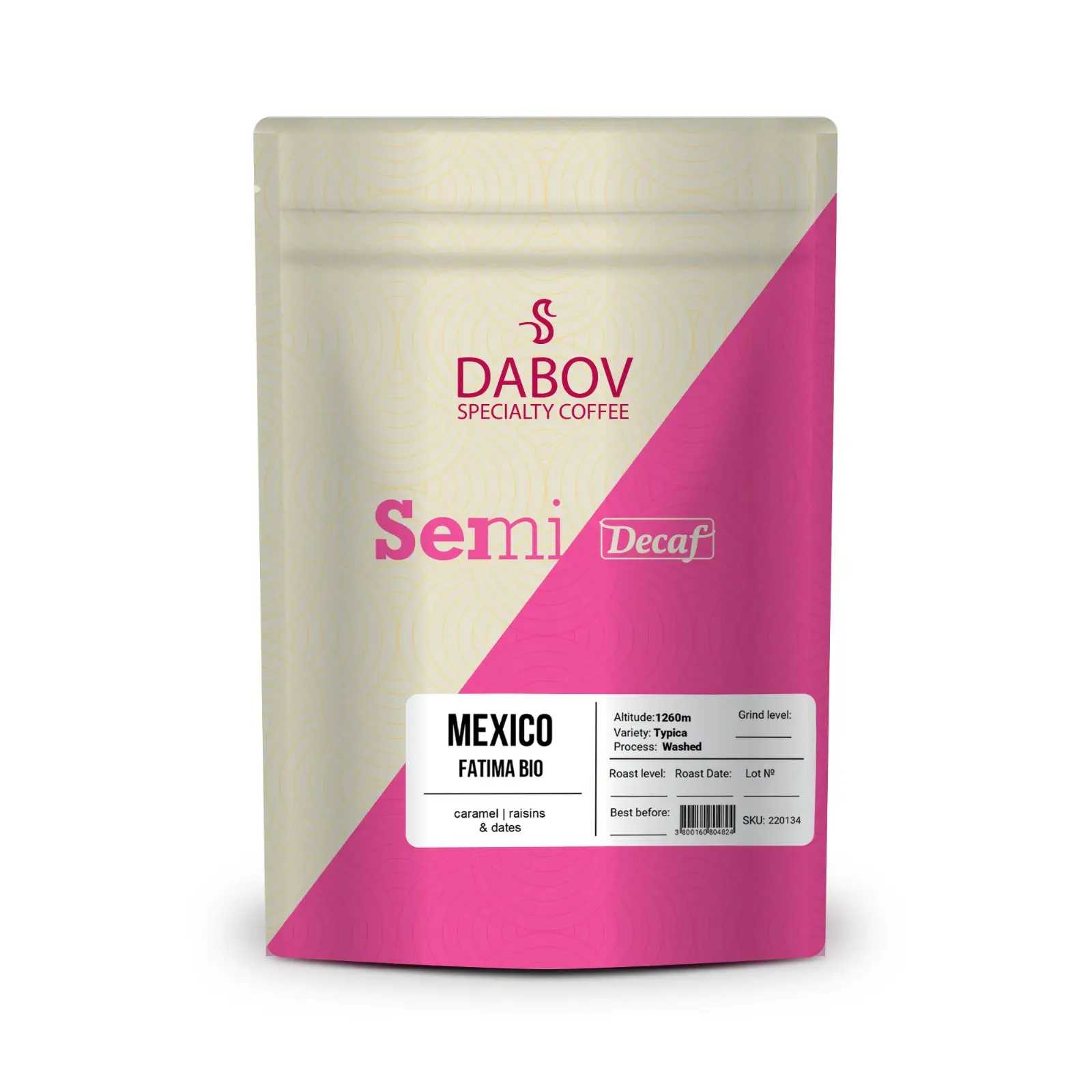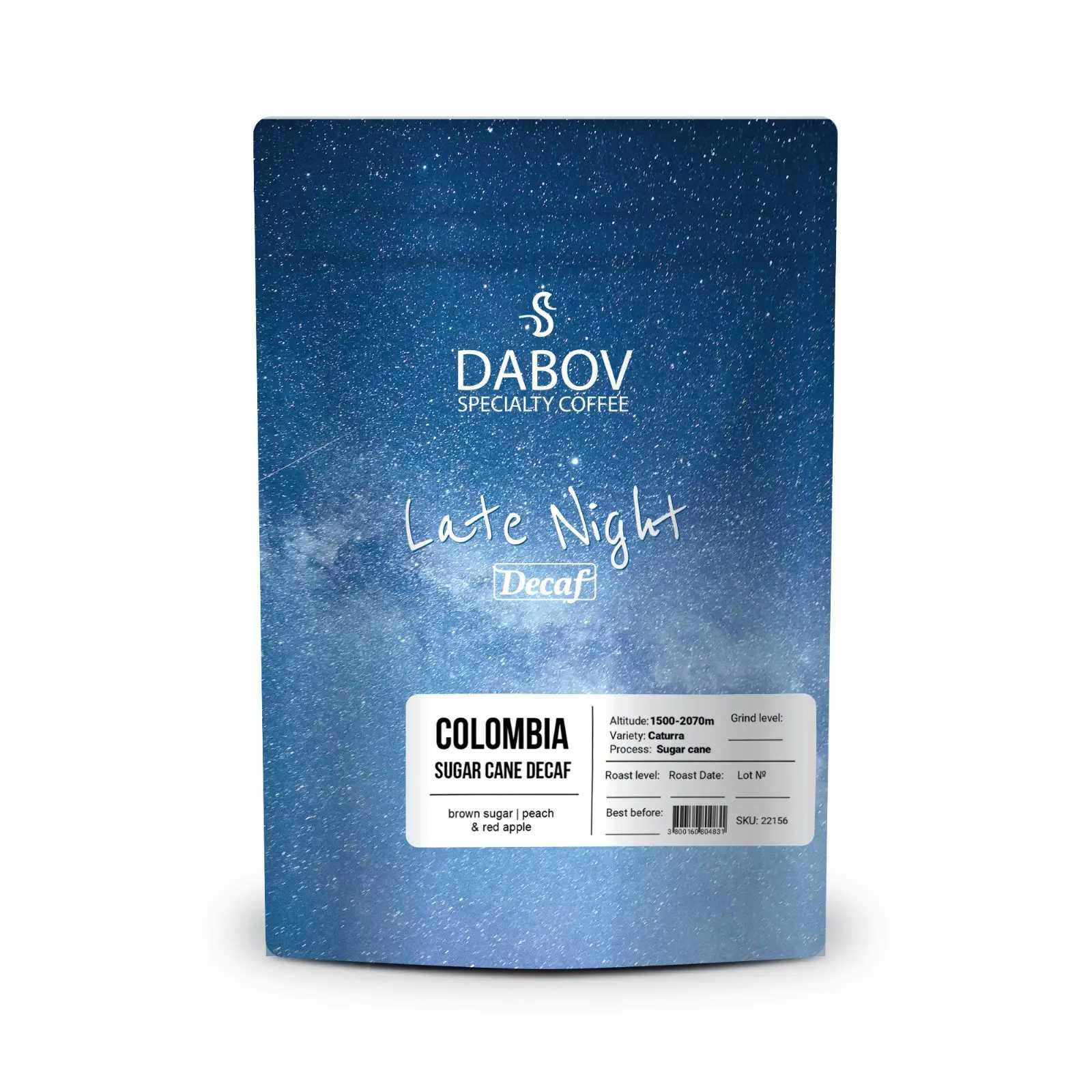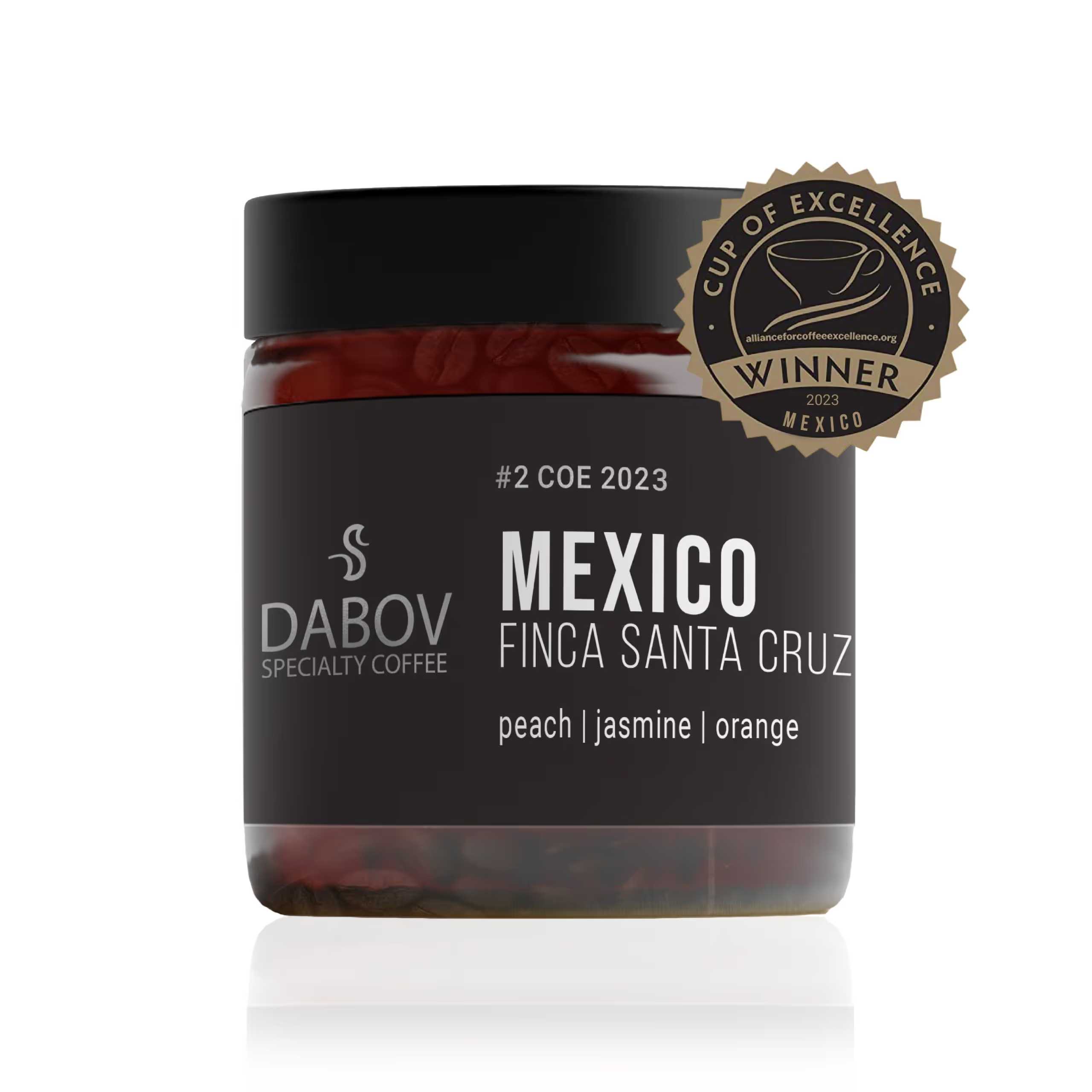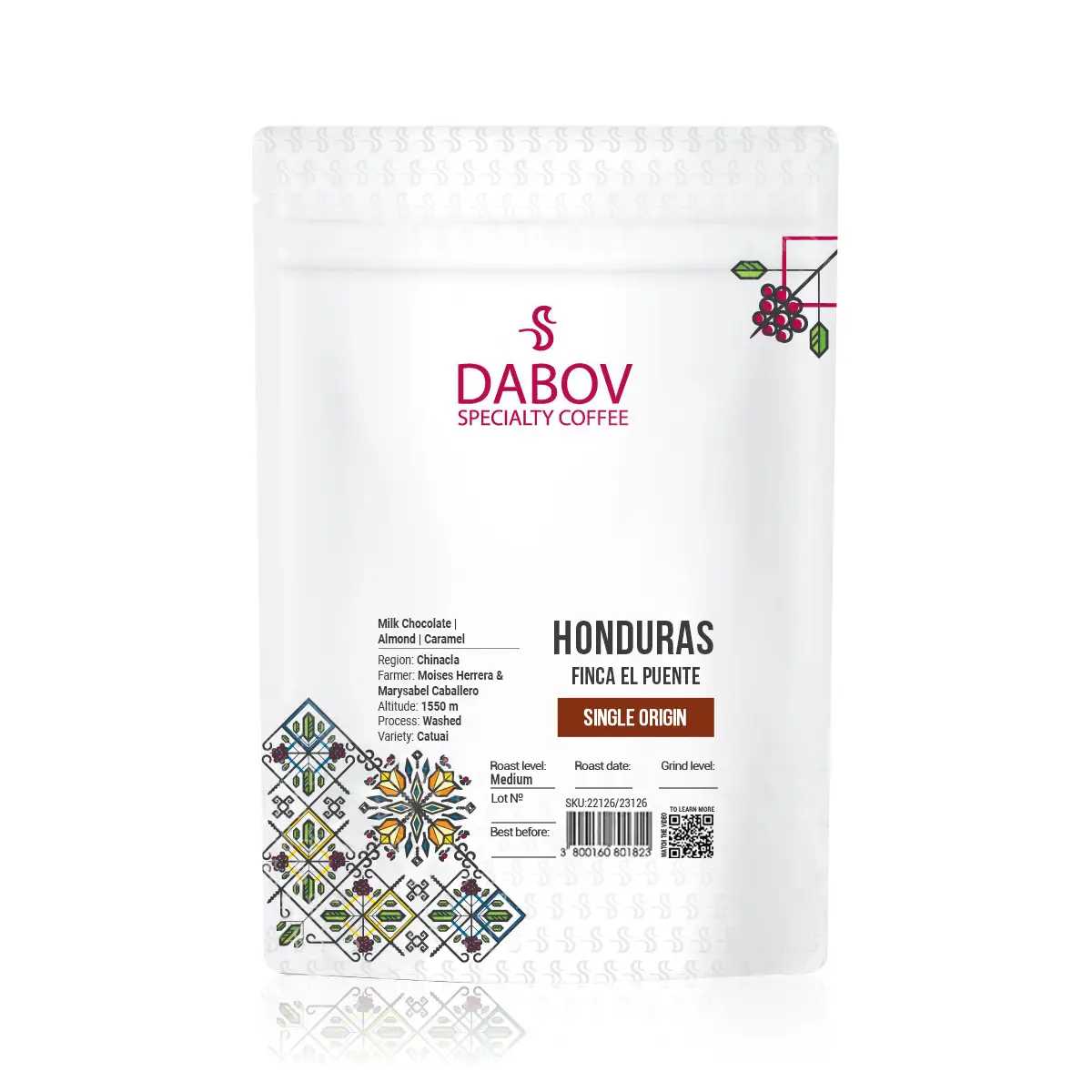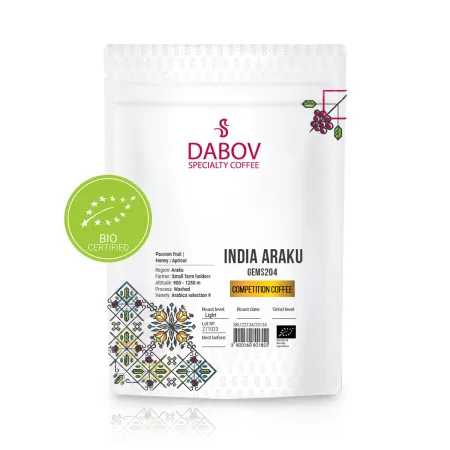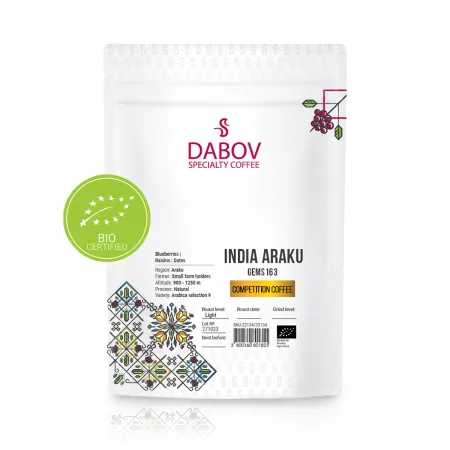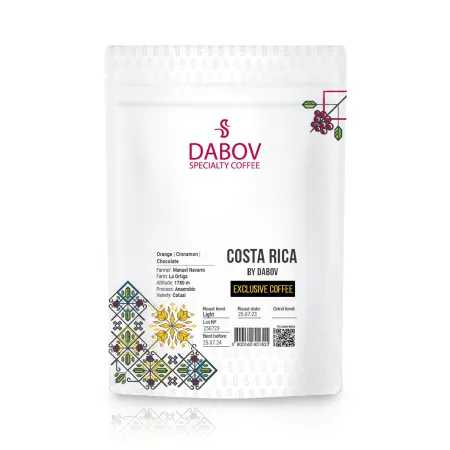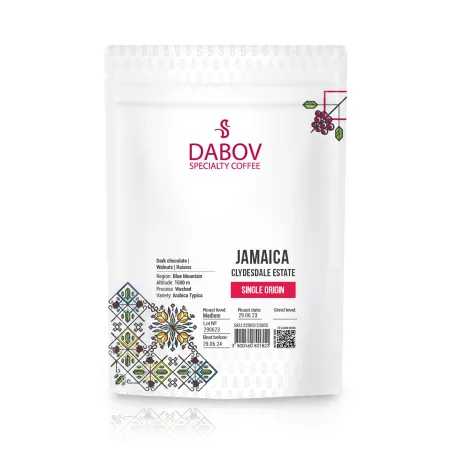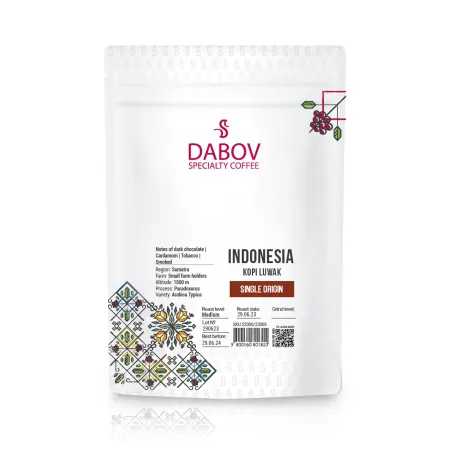Specialty Coffee Trends What's Brewing Next?
Discover the exciting world of specialty coffee as we dive into the latest trends shaping the industry. Specialty coffee isn't just a drink; it's an experience that reflects evolving consumer preferences for quality, sustainability, and innovation. The rise of single-origin coffees and the emphasis on eco-friendly practices are just the beginning. Enthusiasts are now exploring innovative brewing methods, health-oriented beverages, and daring flavor combinations. With technology enhancing the coffee experience, coffee tourism, and online communities are gaining momentum. Join us as we predict future trends, spotlight key players in the market, and guide coffee lovers on how to engage with the vibrant specialty coffee culture. Whether you're a seasoned barista or a coffee novice, this article is your gateway to understanding what's brewing next in specialty coffee.
In the ever-evolving world of coffee, specialty brews have carved out a significant niche, captivating the palates and imaginations of coffee enthusiasts worldwide. This surge in popularity isn't just a fleeting trend; it's a revolution in how we perceive, consume, and appreciate coffee. Specialty coffee, characterized by its superior quality, unique flavor profiles, and ethical sourcing practices, has transformed the coffee landscape, elevating the humble bean to an art form. As we delve into the intricate world of specialty coffee, we'll explore the current trends shaping the industry and peek into the future to see what's percolating on the horizon.
I. Introduction
Overview of Specialty Coffee
Specialty coffee represents the pinnacle of quality in the coffee world. It's not just about the final cup but encompasses the entire journey from seed to sip. This category of coffee is distinguished by its exceptional flavor, meticulous cultivation, and precise processing methods. Unlike mass-produced coffee, specialty coffee celebrates the unique characteristics imparted by factors such as terroir, varietal, and processing technique. The Specialty Coffee Association (SCA) defines specialty coffee as coffee that scores 80 points or above on a 100-point scale, evaluated by certified Q Graders. This rigorous standard ensures that only the cream of the crop earns the specialty designation.
The surge in interest in specialty coffee can be attributed to a confluence of factors. Consumers are becoming increasingly discerning, seeking out experiences that go beyond the ordinary. This shift in consumer preferences has led to a demand for coffee that not only tastes exceptional but also tells a story. Specialty coffee satisfies this craving for authenticity and connection, offering a window into the origins of the bean and the craftsmanship behind each cup. Moreover, the specialty coffee movement aligns with broader trends towards sustainability, ethical consumption, and artisanal production, resonating with consumers who are conscious about the impact of their purchasing decisions.
Purpose of the Article
As we embark on this exploration of specialty coffee trends, our objective is twofold. First, we aim to provide a comprehensive overview of the current landscape, highlighting the innovations and practices that are shaping the industry today. From the rise of single-origin coffees to the integration of cutting-edge technology in brewing methods, we'll examine the factors driving the specialty coffee market forward. Secondly, we'll cast our gaze to the future, analyzing emerging trends and making informed predictions about what's next for the world of specialty coffee. By the end of this article, readers will have a deep understanding of the forces at play in the specialty coffee industry and be well-equipped to anticipate and participate in the exciting developments on the horizon.
II. Current Specialty Coffee Trends
A. Rise of Single-Origin Coffees
Explanation of Single-Origin
Single-origin coffee has become a cornerstone of the specialty coffee movement, captivating consumers with its promise of unique and distinct flavor profiles. At its core, single-origin coffee refers to beans sourced from a specific geographic location, be it a single farm, a collection of farms in a particular region, or even a single country. This specificity allows for a level of traceability and transparency that was previously unheard of in the coffee industry. When you sip a single-origin coffee, you're not just tasting a beverage; you're experiencing the essence of a particular place, its climate, soil composition, and the expertise of its farmers.
The appeal of single-origin coffees lies in their ability to showcase the nuanced flavors that are unique to their place of origin. For instance, a coffee from the high-altitude regions of Ethiopia might offer floral and citrusy notes, while a bean from the volcanic soils of Guatemala could present a rich, chocolatey profile with hints of nuttiness. This diversity of flavors has transformed coffee tasting into an experience akin to wine tasting, with enthusiasts exploring the subtle differences between regions and even individual farms. The rise of single-origin coffees has also fostered a deeper appreciation for the art of coffee cultivation and processing, elevating the status of coffee farmers and highlighting the importance of terroir in coffee production.
Impact on Coffee Quality
The focus on single-origin coffees has had a profound impact on overall coffee quality across the industry. By establishing direct relationships with farmers and cooperatives, roasters can ensure that only the highest quality beans are selected, often paying premium prices to incentivize exceptional cultivation and processing practices. This direct sourcing model not only improves the end product but also promotes sustainable farming practices and fair compensation for producers.
Moreover, the emphasis on single-origin coffees has led to innovations in processing methods and quality control. Farmers are experimenting with various fermentation techniques, drying methods, and sorting processes to bring out the best in their beans. Advanced technology, such as spectral analysis and artificial intelligence, is being employed to assess bean quality with unprecedented precision. This focus on quality at every stage of production has raised the bar for the entire coffee industry, encouraging even large-scale producers to improve their standards to meet growing consumer expectations.
B. Emphasis on Sustainability
Consumer Awareness
In recent years, there has been a significant shift in consumer consciousness regarding the environmental and social impact of coffee production. This heightened awareness has become a driving force in the specialty coffee market, influencing purchasing decisions and shaping industry practices. Consumers are no longer satisfied with simply enjoying a great cup of coffee; they want to know that their choice is contributing positively to the world.
This growing awareness encompasses a range of concerns, from the environmental impact of coffee cultivation and processing to the social and economic well-being of coffee-growing communities. Consumers are educating themselves about issues such as deforestation, water usage, and the carbon footprint associated with coffee production and transportation. They're also becoming more attuned to the challenges faced by coffee farmers, including fair wages, working conditions, and the long-term sustainability of coffee farming as a livelihood.
As a result, there's an increasing demand for transparency in the coffee supply chain. Specialty coffee roasters and cafes are responding by providing detailed information about their sourcing practices, often highlighting direct relationships with farmers and showcasing the stories behind each bean. This trend towards transparency not only satisfies consumer curiosity but also fosters a sense of connection between the coffee drinker and the origin of their beverage.
Sustainable Practices
The specialty coffee industry has been at the forefront of adopting and promoting sustainable practices throughout the coffee supply chain. These efforts range from environmentally friendly cultivation methods to innovative packaging solutions and carbon-neutral initiatives.
One significant trend is the adoption of organic farming practices. Many specialty coffee producers are moving away from chemical pesticides and fertilizers, opting instead for natural pest control methods and organic compost. This not only reduces the environmental impact but also often results in healthier, more flavorful beans. Shade-grown coffee, which preserves forest canopies and biodiversity, has also gained popularity among environmentally conscious consumers and producers alike.
Water conservation is another critical area of focus. Innovative processing methods, such as anaerobic fermentation and honey processing, are being employed to reduce water usage without compromising quality. Some producers are even implementing closed-loop water systems to minimize waste and protect local water resources.
Packaging has become a key battleground in the quest for sustainability. Many specialty coffee roasters are transitioning to compostable or recyclable packaging materials, moving away from traditional foil-lined bags that are difficult to recycle. Some companies are experimenting with reusable container programs, encouraging customers to bring their own vessels for refills.
Carbon neutrality is emerging as the gold standard for sustainability in the coffee industry. Forward-thinking companies are conducting comprehensive carbon audits of their operations and implementing strategies to offset their emissions. This might involve investing in reforestation projects, supporting renewable energy initiatives, or redesigning their supply chains to minimize transportation-related emissions.
These sustainable practices are not just good for the planet; they're increasingly becoming a competitive necessity in the specialty coffee market. Consumers are willing to pay a premium for coffee that aligns with their values, making sustainability a key differentiator for brands in a crowded marketplace.
C. Innovative Brewing Methods
Modern Brewing Techniques
The world of specialty coffee has seen a renaissance in brewing methods, with innovative techniques emerging to extract the full potential of high-quality beans. These modern approaches go beyond the traditional drip coffee maker, offering coffee enthusiasts new ways to explore the nuances of their favorite brews.
One of the most intriguing methods to gain popularity is siphon brewing. This visually striking technique uses vacuum pressure to force water through coffee grounds, resulting in a clean, full-bodied cup. The process, which involves a lower brewing temperature than many other methods, is particularly effective at preserving the delicate flavors of lighter roasts and single-origin coffees.
The Aeropress has become a favorite among coffee aficionados for its versatility and portability. This compact device uses pressure to extract coffee quickly, producing a smooth, rich brew with low acidity. Its popularity has even spawned international competitions where baristas compete to create the best Aeropress recipe.
Cold brew has exploded onto the scene, offering a smooth, less acidic alternative to traditional iced coffee. This method involves steeping coarse-ground coffee in cold water for an extended period, typically 12-24 hours. The result is a concentrate that can be diluted and served over ice or used as a base for coffee cocktails. Nitro cold brew, infused with nitrogen for a creamy texture, has further elevated this trend, bringing a draft beer-like experience to coffee shops.
Pour-over brewing, while not new, has seen a resurgence in the specialty coffee world. This manual method allows for precise control over every aspect of the brewing process, from water temperature to pour rate. Baristas and home brewers alike are experimenting with different pour-over devices, such as the Hario V60, Chemex, and Kalita Wave, each offering subtle variations in flavor profile.
These innovative brewing methods not only enhance the flavor representation of specialty coffees but also turn the act of brewing into a ritual, adding an experiential element to coffee consumption. They allow coffee lovers to engage more deeply with their beverage, fostering a greater appreciation for the nuances of different beans and roasts.
Home Brewing Popularity
The COVID-19 pandemic has accelerated a trend that was already gaining momentum: the rise of home brewing. With coffee shops temporarily closed or operating under restrictions, many coffee enthusiasts turned to home brewing out of necessity. This shift has led to a surge in sales of home brewing equipment and a newfound interest in perfecting brewing techniques.
Consumers are investing in high-quality grinders, scales, and brewing devices, seeking to replicate cafe-quality coffee in their own kitchens. This trend goes beyond simple convenience; it represents a desire to gain a deeper understanding of the coffee-making process and to have greater control over the final product.
The home brewing movement has been supported by an abundance of online resources, from YouTube tutorials to virtual workshops hosted by professional baristas. Coffee roasters have adapted to this trend by offering more detailed brewing guides with their products and even curating brewing kits tailored to specific beans or methods.
This focus on home brewing has also led to innovations in coffee packaging and distribution. Subscription services offering regular deliveries of freshly roasted beans have gained popularity, allowing consumers to explore a variety of coffees from the comfort of their homes. Some roasters are even offering green (unroasted) beans for home roasting enthusiasts, further blurring the lines between consumer and producer.
The home brewing trend has had a lasting impact on the specialty coffee industry, creating a more educated and engaged consumer base. Even as coffee shops have reopened, many consumers continue to split their coffee consumption between home-brewed and cafe-bought, appreciating both for their unique qualities.
D. Specialty Coffee and Technology
Tech Integration in Coffee Preparation
The intersection of technology and specialty coffee has led to exciting innovations in coffee preparation, both in cafes and at home. Smart coffee machines are at the forefront of this trend, offering precision control over brewing parameters such as water temperature, pressure, and flow rate. These machines often come with companion apps that allow users to save and share recipes, track their coffee consumption, and even order beans directly from roasters.
Artificial intelligence is making inroads into coffee roasting, with some companies using machine learning algorithms to optimize roast profiles for consistent quality. In the cafe setting, advanced espresso machines with programmable pressure profiling are allowing baristas to fine-tune extractions for each specific coffee, bringing out nuances that were previously unattainable.
Blockchain technology is being explored as a means to enhance traceability in the coffee supply chain. By recording every step of the journey from farm to cup, blockchain can provide consumers with unprecedented transparency and help ensure fair compensation for producers.
Online Coffee Communities
The digital age has fostered the growth of vibrant online coffee communities, connecting enthusiasts, professionals, and producers from around the globe. Social media platforms like Instagram have become showcases for latte art and brewing setups, while dedicated forums and subreddits serve as hubs for discussing everything from extraction techniques to equipment reviews.
These online communities have democratized coffee knowledge, allowing hobbyists to learn directly from industry experts and share their own experiences. Virtual cuppings and tasting events have gained popularity, especially in the wake of the pandemic, enabling participants to sample and discuss coffees together across geographical boundaries.
The rise of coffee influencers and content creators has also played a significant role in shaping trends and educating consumers. YouTube channels dedicated to coffee have millions of subscribers, covering topics ranging from basic brewing tutorials to in-depth explorations of coffee science and culture.
These digital platforms have not only enhanced consumer knowledge but have also provided valuable feedback channels for roasters and equipment manufacturers. Many companies now actively engage with online communities, using social media and forums to gather insights, test new products, and build brand loyalty.
III. Emerging Trends in the Coffee Industry
A. Health and Wellness Focus
Functional Coffees
As consumers become increasingly health-conscious, the specialty coffee industry is responding with innovative products that promise benefits beyond the traditional caffeine boost. Functional coffees, which incorporate ingredients known for their health-promoting properties, are gaining traction among those looking to maximize the nutritional value of their daily brew.
One of the most prominent trends in this category is the addition of adaptogens to coffee. These natural substances, believed to help the body adapt to stress, include ingredients like mushrooms (particularly varieties such as reishi, chaga, and lion's mane), ashwagandha, and maca root. Mushroom coffee, for instance, is touted for its potential cognitive benefits and reduced caffeine content compared to traditional coffee.
Probiotics are another addition making waves in the functional coffee space. While the high temperature of coffee typically kills off beneficial bacteria, some companies have developed heat-resistant probiotic strains that can survive the brewing process. These coffees claim to support gut health and boost the immune system, appealing to consumers looking for ways to incorporate probiotics into their daily routine.
Collagen-infused coffees have also emerged as a trend, marketed for their potential benefits for skin, hair, and joint health. While the efficacy of collagen in coffee is still debated, the product has found a niche among beauty-conscious consumers.
CBD-infused coffee is another category gaining attention, particularly in regions where cannabis-derived products are legal. Proponents claim that the combination of CBD and caffeine provides a balanced energy boost without the jitters often associated with coffee consumption.
It's important to note that while these functional coffees are growing in popularity, the scientific evidence supporting their claims varies. Consumers are advised to approach these products with a critical eye and consult healthcare professionals when considering them as part of their wellness routine.
Caffeine Alternatives
Alongside the rise of functional coffees, there's a growing market for caffeine alternatives that cater to those looking to reduce their caffeine intake without giving up the ritual and flavor of coffee. This trend is driven by various factors, including concerns about caffeine sensitivity, sleep quality, and overall health.
Decaf coffee, long maligned by coffee purists, is undergoing a renaissance in the specialty coffee world. Improved decaffeination processes, such as the Swiss Water Process and CO2 method, are producing decaf beans that retain much of the flavor complexity of their caffeinated counterparts. Some specialty roasters are now offering single-origin decaf options, treating these beans with the same care and attention as their regular offerings.
Herbal coffee alternatives are gaining popularity, offering similar flavor profiles to coffee without any caffeine. These blends often incorporate ingredients like chicory root, dandelion root, and roasted grains to mimic the rich, roasted flavor of coffee. Some companies are even creating "coffee-like" beverages from unlikely sources such as mushrooms or fig seeds.
Low-caffeine coffee varietals, such as Laurina, are being explored by specialty roasters. These naturally low-caffeine beans offer a unique flavor profile and allow consumers to enjoy coffee with reduced caffeine content without resorting to chemical decaffeination processes.
Cascara, made from the dried skins of coffee cherries, is emerging as both a standalone beverage and an ingredient in coffee blends. With significantly less caffeine than coffee beans, cascara offers a fruity, tea-like flavor while still connecting consumers to the coffee plant.
These caffeine alternatives and low-caffeine options are not just appealing to health-conscious consumers; they're also expanding the occasions for coffee consumption. By offering options suitable for evening enjoyment or for those sensitive to caffeine, the specialty coffee industry is broadening its reach and ensuring that there's a coffee experience for everyone, regardless of their caffeine preferences.
B. Experiential Coffee Consumption
Coffee Tasting Events
The specialty coffee industry is increasingly focusing on creating immersive experiences that go beyond simply serving a great cup of coffee. Coffee tasting events, often called cuppings in industry parlance, have evolved from a professional quality control tool to a popular consumer experience. These events offer coffee enthusiasts the opportunity to sample a variety of coffees side by side, learning to discern subtle flavor notes and appreciate the nuances of different origins and processing methods.
Professional cuppings follow a standardized protocol set by the Specialty Coffee Association, involving precise ratios of coffee to water, specific grind sizes, and a structured tasting process. However, many roasters and cafes are adapting these protocols to create more accessible and engaging experiences for consumers. These events might include guided tastings, where an expert leads participants through the flavor profiles of different coffees, explaining the factors that contribute to each bean's unique characteristics.
Some roasters are taking the concept further by offering sensory workshops that train participants' palates to identify specific flavors and aromas commonly found in coffee. These workshops often incorporate elements from wine tasting, using flavor wheels and aroma kits to help participants develop a vocabulary for describing their sensory experiences.
Virtual coffee tastings have gained popularity, especially in the wake of the COVID-19 pandemic. These online events allow participants to receive coffee samples in advance and then join a guided tasting session via video conference. This format has opened up new possibilities for connecting coffee lovers with producers and roasters from around the world, regardless of geographical limitations.
Coffee and food pairing events are another emerging trend, showcasing how different coffees can complement and enhance various cuisines. These events might feature collaborations between roasters and chefs, creating unique culinary experiences that highlight the versatility of coffee as both a beverage and a culinary ingredient.
These tasting events serve multiple purposes: they educate consumers, foster community among coffee enthusiasts, and provide a platform for roasters to showcase their offerings. As consumers become more knowledgeable and discerning, these experiences are likely to become an increasingly important part of the specialty coffee landscape.
Coffee Tourism
Coffee tourism is emerging as a significant trend, blending the worlds of travel and specialty coffee. This form of experiential tourism allows coffee lovers to visit the places where their favorite beans are grown, providing a deeper connection to the origins of their daily brew and a greater appreciation for the complexities of coffee production.
Coffee farm tours are at the heart of this trend. These experiences range from day trips to nearby farms for urban dwellers to multi-day immersive stays on coffee plantations. Visitors can witness every stage of the coffee production process, from cultivation and harvesting to processing and roasting. Many tours offer hands-on experiences, allowing participants to try their hand at picking ripe coffee cherries or participating in the sorting and processing of beans.
Some coffee-producing regions are developing dedicated coffee trails, similar to wine routes in viticultural areas. These trails guide visitors through multiple farms, processing facilities, and roasteries, offering a comprehensive view of the local coffee industry. Countries like Colombia, Ethiopia, and Costa Rica are at the forefront of this trend, leveraging their reputations as premier coffee-growing regions to attract tourists.
Coffee festivals and events in producing countries are also drawing international visitors. These events often combine elements of trade shows with consumer-focused activities, offering a unique opportunity to meet producers, sample a wide variety of coffees, and attend workshops and lectures by industry experts.
Urban coffee tourism is growing as well, with specialty coffee shop tours becoming popular in cities known for their coffee culture. These tours might include visits to multiple cafes and roasteries, offering insights into local coffee trends and brewing techniques.
The rise of coffee tourism has significant implications for producing communities. When done responsibly, it can provide additional income streams for farmers and increase awareness of the challenges and complexities of coffee production. It also has the potential to foster direct relationships between consumers and producers, supporting more equitable trade practices.
As consumers increasingly seek out authentic, educational travel experiences, coffee tourism is likely to continue growing, offering new ways for coffee enthusiasts to deepen their appreciation and understanding of their favorite beverage.
C. New Flavors and Ingredients
Flavor Innovations
The specialty coffee industry is constantly pushing the boundaries of flavor, experimenting with new processing methods, fermentation techniques, and flavor infusions to create unique and exciting taste experiences. This trend towards flavor innovation is driven by a desire to differentiate in a crowded market and to cater to consumers' increasingly adventurous palates.
One area of innovation is in coffee processing methods. Experimental fermentation techniques, borrowed from the wine and beer industries, are being applied to coffee processing. For example, anaerobic fermentation, where coffee cherries are fermented in sealed tanks without oxygen, can produce beans with intense, fruity flavors that are distinctly different from traditionally processed coffees. Some producers are even experimenting with fermenting coffee cherries with specific yeasts or bacteria to create targeted flavor profiles.
Barrel-aged coffees are gaining popularity, with green coffee beans aged in barrels previously used for aging whiskey, rum, or wine. This process imparts subtle flavors from the barrels to the coffee, creating complex and unique taste experiences. While this technique has been around for a while, it's seeing renewed interest and experimentation in the specialty coffee world.
Flavor-infused coffees are also making a comeback, but with a more sophisticated approach than the artificially flavored coffees of the past. Some roasters are experimenting with natural infusions, such as aging green coffee beans with spices or fruits before roasting. Others are exploring ways to incorporate flavors during the roasting process itself, creating subtle and natural flavor enhancements.
Cascara, the dried skins of coffee cherries typically discarded during processing, is finding new life as both a standalone beverage and an ingredient in coffee blends. With a flavor profile more akin to tea than coffee, cascara offers a unique way to experience a different aspect of the coffee plant.
Some roasters are pushing the boundaries even further with truly unconventional offerings. Mushroom coffee, which blends coffee with powdered medicinal mushrooms, has gained a following for its purported health benefits and unique earthy flavor. Coffee blended with adaptogens like ashwagandha or maca root is another emerging category, appealing to health-conscious consumers looking for functional benefits.
These flavor innovations are not just about novelty; they're about expanding the perception of what coffee can be and offering consumers new ways to explore and appreciate the complexity of coffee. As the specialty coffee market continues to mature, we can expect to see even more creative approaches to flavor development.
Gen Z and Millennial Influence
The preferences and values of younger generations, particularly Gen Z and Millennials, are having a significant impact on the specialty coffee industry, driving innovation in flavors and product offerings. These demographics are known for their willingness to experiment with new flavors and their desire for unique, Instagram-worthy experiences.
One notable trend is the rise of visually striking coffee drinks. Colorful lattes, often made with natural ingredients like butterfly pea flower, matcha, or beetroot powder, have become social media sensations. These eye-catching beverages appeal to younger consumers' desire for novel experiences and shareable content.
Plant-based milk alternatives have seen explosive growth, driven in large part by younger consumers' concerns about sustainability and animal welfare. Oat milk, in particular, has become a favorite in the specialty coffee world for its creamy texture and neutral flavor that complements coffee well. Roasters and cafes are increasingly offering a wide range of milk alternatives, including innovative options like pistachio or macadamia milk.
Cold brew and nitro coffee continue to be popular among younger consumers, who appreciate their smooth flavor and higher caffeine content. The versatility of cold brew as a base for coffee cocktails and other creative drinks also appeals to this demographic's desire for customization and experimentation.
Ready-to-drink (RTD) coffee products are evolving to meet the demands of on-the-go Millennials and Gen Z consumers. Premium canned lattes, nitro cold brews, and even sparkling coffee beverages are gaining traction, offering convenience without sacrificing quality.
Younger consumers' interest in wellness and functional ingredients is driving the development of coffee products that offer benefits beyond caffeine. This includes the aforementioned mushroom coffees, as well as coffees infused with CBD, adaptogens, or other supplements purported to enhance focus, reduce stress, or support overall health.
The influence of global flavors is also evident, with younger consumers showing interest in coffee drinks inspired by international trends. For example, the popularity of dalgona coffee, which originated in South Korea and went viral on social media, demonstrates how quickly global trends can spread among these demographics.
These younger generations also place a high value on sustainability and ethical sourcing. This has pushed the industry to be more transparent about their supply chains and to invest in environmentally friendly packaging and practices. Many specialty coffee brands are now highlighting their direct trade relationships and sustainability initiatives as key selling points.
As Gen Z and Millennials continue to make up a larger portion of the coffee-consuming public, their preferences will likely play an increasingly important role in shaping the future of specialty coffee. Roasters and cafes that can successfully cater to these demographics' desire for unique flavors, experiences, and values are well-positioned for success in the evolving coffee market.
IV. The Future of Specialty Coffee
A. Predictions for the Coffee Market
Market Growth Projections
The specialty coffee market is poised for significant growth in the coming years, driven by increasing consumer interest in high-quality, ethically sourced coffee and the continuous innovation within the industry. According to recent market research reports, the global specialty coffee market is expected to grow at a compound annual growth rate (CAGR) of around 8-10% over the next five years.
This growth is anticipated to be particularly strong in emerging markets, where rising disposable incomes and changing consumer preferences are fueling demand for premium coffee products. Countries like China and India, traditionally tea-drinking nations, are seeing a rapid expansion of coffee culture, especially among urban youth.
In mature markets like North America and Europe, growth is expected to be driven by increasing consumer sophistication and a willingness to pay premium prices for high-quality, sustainably sourced coffee. The at-home coffee segment is projected to see significant growth, a trend accelerated by the COVID-19 pandemic and likely to continue as consumers invest in quality home brewing equipment.
The ready-to-drink (RTD) coffee segment is forecasted to be one of the fastest-growing categories within specialty coffee. This growth is driven by convenience-seeking consumers and innovations in packaging and formulation that allow for high-quality coffee in a grab-and-go format.
Sustainability is expected to play an increasingly important role in market growth. Companies that can demonstrate genuine commitment to environmental stewardship and ethical sourcing are likely to see stronger consumer loyalty and market share growth.
It's important to note that while the overall trajectory for specialty coffee is positive, the market faces challenges. Climate change poses a significant threat to coffee production, potentially affecting supply and driving up prices. Additionally, economic uncertainties could impact consumer spending on premium products. However, the industry's track record of innovation and adaptation suggests that it is well-positioned to navigate these challenges.
Technological Advancements
The future of specialty coffee is inextricably linked to technological advancements that are reshaping every aspect of the industry, from cultivation to consumption. Artificial Intelligence (AI) and machine learning are expected to play increasingly important roles in optimizing coffee production and quality control.
In farming, AI-powered systems are being developed to monitor crop health, predict optimal harvest times, and manage irrigation more efficiently. Drones equipped with multispectral cameras can provide detailed information about plant health and soil conditions, allowing for more precise and sustainable farming practices.
Blockchain technology is poised to revolutionize traceability in the coffee supply chain. By creating an immutable record of each step in the journey from farm to cup, blockchain can provide unprecedented transparency, helping to ensure fair compensation for farmers and allowing consumers to verify the authenticity of their coffee's origin and sustainability claims.
Roasting technology is also advancing rapidly. AI-assisted roasting machines are becoming more sophisticated, able to learn from past roasts to consistently produce optimal flavor profiles. Some companies are exploring the use of augmented reality (AR) to enhance the roasting process, providing roasters with real-time data visualizations to help them make more informed decisions during the roast.
In the realm of brewing, we can expect to see continued innovation in smart coffee machines for both commercial and home use. These machines may incorporate features like voice control, personalized recipe storage, and even the ability to adjust brewing parameters based on factors like ambient temperature and humidity to ensure consistent quality.
Sensory science is another area where technology is making significant strides. Advanced spectrometry and gas chromatography techniques are being refined to provide more detailed analysis of coffee compounds, potentially leading to more precise quality control methods and the ability to engineer specific flavor profiles.
The integration of Internet of Things (IoT) technology throughout the coffee supply chain is likely to increase. From smart sensors in coffee farms to connected coffee machines in cafes and homes, IoT devices will generate vast amounts of data that can be used to optimize every stage of coffee production and consumption.
As these technologies mature and become more accessible, we can expect to see a democratization of high-quality coffee production and brewing. This could lead to a more diverse and innovative specialty coffee landscape, with smaller producers and roasters able to leverage technology to compete on quality with larger, established brands.
However, it's worth noting that as technology becomes more prevalent in the coffee industry, there may be a counterbalancing trend emphasizing traditional, artisanal methods. The challenge for the industry will be to find ways to integrate technological advancements while maintaining the craft and human expertise that are central to the appeal of specialty coffee.
B. Evolving Consumer Behaviors
Data on Consumer Preferences
Consumer preferences in the specialty coffee market are continually evolving, shaped by factors ranging from health consciousness to environmental concerns. Recent market research and consumer surveys provide valuable insights into these changing preferences, offering a glimpse into the future direction of the industry.
One significant trend is the growing importance of origin and traceability. A survey conducted by the National Coffee Association (NCA) found that 67% of consumers say they're more likely to buy coffee that is certified as sustainably sourced. This reflects a broader trend of consumers seeking transparency in their food and beverage choices.
The demand for personalization is also on the rise. A study by Mintel revealed that 39% of US coffee drinkers are interested in coffees tailored to their individual taste preferences. This desire for customization is driving innovations in both product offerings and retail experiences.
Health considerations are increasingly influencing coffee choices. The same NCA survey found that 42% of consumers are more likely to purchase coffee if it's labeled as organic. There's also growing interest in functional coffee products, with 27% of coffee drinkers expressing interest in coffees with added health benefits.
The at-home coffee experience continues to gain importance. A report by the Specialty Coffee Association (SCA) noted a significant increase in home brewing equipment sales, with many consumers investing in higher-end machines and grinders. This trend, accelerated by the COVID-19 pandemic, appears to have staying power, with 85% of consumers who increased their at-home coffee consumption during lockdowns indicating they plan to continue this habit.
Cold brew and ready-to-drink (RTD) coffee products are seeing strong growth, particularly among younger consumers. Nielsen data shows that sales of cold brew coffee grew by 15% in 2020, outpacing the overall coffee category.
Sustainability is becoming a key factor in purchasing decisions. A global survey by Yale University found that 73% of coffee drinkers would be willing to pay more for coffee that is environmentally sustainable. This concern extends beyond environmental issues to include social sustainability, with consumers showing increased interest in fair trade and direct trade models.
The preference for milk alternatives in coffee continues to grow. Oat milk, in particular, has seen explosive growth, with sales increasing by 170% in 2020 according to Nielsen data. This trend is driven by both health considerations and environmental concerns.
These data points suggest a future where consumers are more engaged with their coffee choices, seeking out products that align with their values, offer unique experiences, and fit into their lifestyles. The challenge for the specialty coffee industry will be to meet these diverse and evolving preferences while maintaining the focus on quality that defines the category.
Social Responsibility
Social responsibility has become a cornerstone of the specialty coffee industry, with consumers increasingly expecting brands to demonstrate a commitment to ethical practices and sustainability. This shift is not just a passing trend but a fundamental change in how consumers view their relationship with coffee and the companies that produce it.
Fair trade and direct trade models have gained significant traction in recent years. These approaches aim to ensure that coffee farmers receive fair compensation for their work and have more direct relationships with buyers. According to Fairtrade International, sales of Fairtrade certified coffee grew by 8% in 2019, indicating strong consumer support for these initiatives.
Environmental sustainability is another critical aspect of social responsibility in the coffee industry. Climate change poses a significant threat to coffee production, with some estimates suggesting that up to 50% of the land currently used for coffee cultivation could become unsuitable by 2050. In response, many specialty coffee companies are investing in climate-resilient farming practices and supporting reforestation efforts in coffee-growing regions.
Carbon neutrality is becoming a standard expectation rather than a differentiator. Several prominent specialty coffee roasters have announced commitments to achieve carbon neutrality in their operations, with some even aiming for carbon negative status. These efforts often involve a combination of emissions reduction strategies and carbon offset programs.
Gender equity in the coffee supply chain is gaining increased attention. Women play a crucial role in coffee production, often making up the majority of the workforce on coffee farms. However, they frequently face discrimination and lack access to resources. Some specialty coffee companies are implementing programs specifically designed to support and empower women in coffee-growing communities.
Youth engagement is another area of focus, as the average age of coffee farmers continues to rise. Programs that provide training, resources, and incentives for young people to enter or remain in the coffee industry are becoming more common, aimed at ensuring the long-term sustainability of coffee production.
Waste reduction is a growing concern, with companies exploring innovative solutions to address issues like single-use cups and packaging waste. Some cafes are implementing reusable cup programs, while roasters are experimenting with compostable packaging materials.
Consumer education is increasingly seen as part of social responsibility. Many specialty coffee companies are taking on the role of educators, providing information about the complexities of the coffee supply chain and the impact of consumer choices. This transparency is helping to create a more informed and engaged consumer base.
As social responsibility becomes a standard expectation rather than a differentiator, companies in the specialty coffee industry will need to continually innovate and improve their practices. Those that can demonstrate genuine commitment to ethical and sustainable practices, backed by measurable impacts, are likely to gain a competitive advantage in an increasingly conscious consumer market.
V. Coffee Market Guide
A. Key Players in Specialty Coffee
Major Brands and Producers
The specialty coffee market is home to a diverse array of brands and producers, ranging from large multinational corporations to small, artisanal roasters. While the landscape is constantly evolving,



